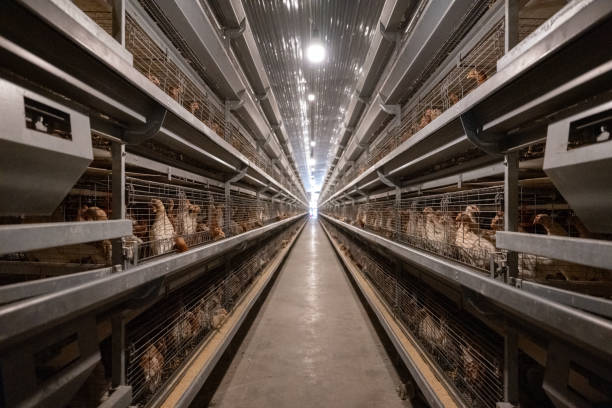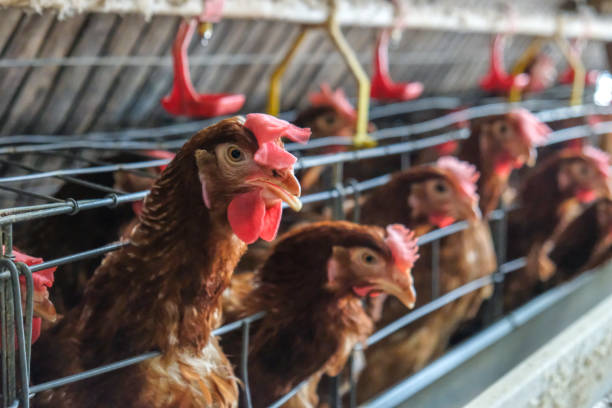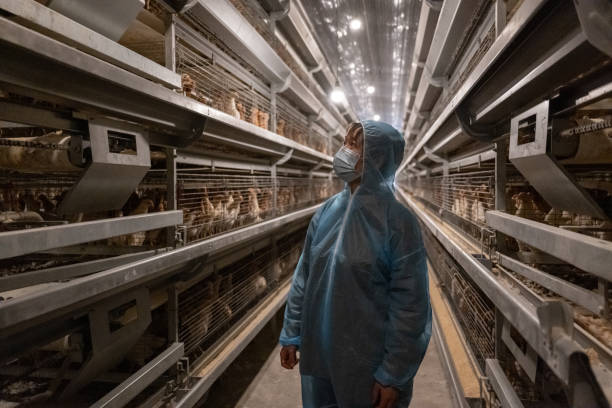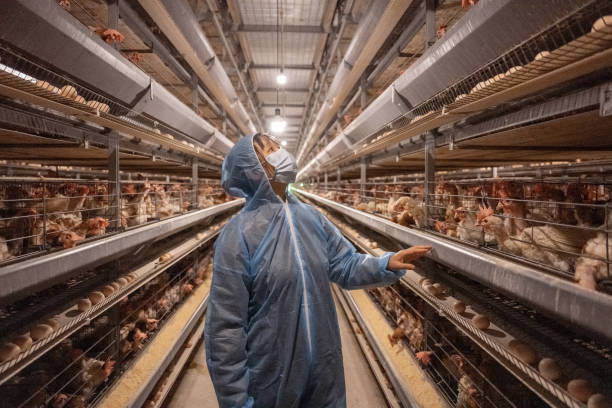Optimizing Battery Cage Systems for 10,000 Layers: A Nigerian Poultry Farmer’s Guide
Optimizing Battery Cage Systems for 10,000 Layers: A Nigerian Poultry Farmer’s Guide
For any Nigerian poultry farmer aiming to manage 10,000 laying hens efficiently, the battery cage system presents a compelling option. It maximizes space, streamlines management, and ultimately, boosts profitability. However, simply installing cages isn’t enough. Success requires careful planning, informed decision-making, and a commitment to best practices. This guide provides a comprehensive overview of how to optimize battery cage systems for 10,000 layers, offering practical advice relevant to the Nigerian context.
Understanding the Landscape: Why Battery Cages in Nigeria?
Before diving into the specifics, it’s crucial to understand why battery cages are a popular choice in Nigeria. Land scarcity, particularly in urban and peri-urban areas, necessitates efficient use of vertical space. Battery cages, designed as multi-tiered systems, allow farmers to house a significant number of birds in a relatively small footprint.
Furthermore, the controlled environment offered by battery cages contributes to improved biosecurity. Reduced contact with litter materials minimizes the risk of coccidiosis and other soil-borne diseases, a significant concern in Nigerian poultry farming. Efficient egg collection, simplified feeding and watering, and easier monitoring of individual bird health are additional advantages that enhance farm management and labor efficiency.
However, it’s essential to acknowledge the ongoing discussions surrounding animal welfare. While battery cages offer numerous benefits, responsible farming practices are crucial to ensure the well-being of the layers. Modern battery cages often incorporate features like enriched environments and improved ventilation to address welfare concerns.
Planning and Design: Setting the Stage for Success
The foundation of an efficient battery cage system lies in meticulous planning and design. Consider these key aspects:
Space Requirements: A 10,000-layer farm necessitates a considerable space. Calculate the total area needed based on cage dimensions, aisle widths, and allowance for supplementary equipment like feed storage, egg collection areas, and waste management facilities. As a general guideline, allocate approximately 0.1 square meters of floor space per bird within the cage. This area will significantly increase when considering walkways and service infrastructures.
Cage Selection: The market offers a range of battery cage options, primarily the A-type and H-type systems. A-type cages are generally more affordable and suitable for smaller operations, while H-type systems, with their automated features, are better suited for larger farms and offer superior labor efficiency. Consider factors like cage material (galvanized or coated steel), cage dimensions, feeding and watering mechanisms, and ease of cleaning when making your selection. Opt for high-quality cages from reputable suppliers like Livi Machinery that are designed to withstand the rigors of daily use and the Nigerian environment.
Ventilation: Adequate ventilation is paramount for maintaining air quality and preventing the buildup of harmful gases like ammonia. Natural ventilation can be supplemented with exhaust fans, particularly during hotter months. Design the poultry house with proper inlet and outlet vents to ensure consistent airflow throughout the building. Consider forced ventilation systems with fans and evaporative cooling pads for regions with extremely high temperatures.
Lighting: Proper lighting schedules are essential for stimulating egg production. Implement a consistent light-dark cycle, typically 16 hours of light and 8 hours of darkness, to maximize egg-laying potential. Use energy-efficient LED lights controlled by timers to ensure uniformity and reduce energy consumption.
Waste Management: Efficient waste management is critical for hygiene and environmental sustainability. Consider installing a manure removal system, such as a scraper system or a conveyor belt, to automate the removal of droppings. Composting or biogas production are viable options for converting poultry waste into valuable resources.
Water Supply: Ensure a reliable and clean water supply to the poultry house. Install a water filtration system to remove impurities and prevent diseases. Nipple drinkers are a popular choice for battery cages as they minimize water wastage and promote hygiene. Regular cleaning and flushing of the water lines are crucial to prevent algae growth and bacterial contamination.
Selecting the Right Battery Cage System: A-Type vs. H-Type
The choice between A-type and H-type battery cages significantly impacts the farm’s operational efficiency and capital investment.
A-Type Battery Cages: These are the more traditional option, characterized by their stepped, sloping design.
Advantages: Lower initial investment, simpler installation, and easier to manage in smaller flocks.
Disadvantages: Higher labor requirements for egg collection and manure removal, potentially less efficient space utilization compared to H-type, and a higher risk of egg breakage during manual collection.
H-Type Battery Cages: These are a more modern, automated solution featuring cages stacked vertically in multiple tiers.
Advantages: Optimized space utilization, automated egg collection and manure removal, reduced labor costs, and improved biosecurity.
Disadvantages: Higher initial investment, requires more technical expertise for operation and maintenance, and potentially higher energy consumption for automated systems.
Stocking and Management: Maximizing Egg Production
Once the battery cage system is installed, proper stocking and management are crucial for achieving optimal egg production.
Bird Density: Avoid overcrowding. Maintain the recommended bird density per cage to prevent stress and pecking behavior. Overcrowding can lead to decreased egg production and increased mortality.
Feed and Water Management: Provide a balanced layer feed formulated specifically for laying hens. Ensure adequate access to fresh, clean water at all times. Regularly monitor feed and water consumption to identify any potential health issues. Employ automatic feeding systems to deliver precise amounts of feed to each cage, minimizing waste and ensuring consistent nutrition.
Health Management: Implement a robust biosecurity program to prevent disease outbreaks. Vaccinate birds according to a veterinarian-recommended schedule. Regularly monitor the flock for signs of illness and promptly isolate and treat any sick birds. Maintain excellent hygiene in the poultry house through regular cleaning and disinfection.
Egg Collection: Collect eggs frequently, ideally multiple times per day, to minimize breakage and contamination. Handle eggs carefully to prevent cracking. Grade eggs based on size and quality and store them in a cool, dry place until they are sold. For H-type systems, automated egg collection minimizes labor and egg damage, boosting efficiency.
Record Keeping: Maintain accurate records of egg production, feed consumption, mortality rates, and health treatments. This data will help you identify trends, optimize management practices, and make informed decisions. Tracking key performance indicators (KPIs) such as eggs per hen per year, feed conversion ratio (FCR), and mortality rate helps to assess the system’s efficiency and identify areas for improvement.
Addressing Animal Welfare Concerns: Responsible Farming Practices
While battery cages offer efficiency, it’s critical to prioritize animal welfare. Implementing responsible farming practices not only aligns with ethical considerations but can also boost productivity.
Cage Enrichment: Provide perches or scratching pads inside the cages to allow hens to express natural behaviors. These enrichments can reduce stress and improve overall well-being.
Proper Ventilation and Lighting: Ensure adequate ventilation to maintain optimal air quality and prevent respiratory problems. Implement a consistent lighting schedule to promote egg production while providing sufficient rest periods.
Regular Monitoring: Observe the birds closely for signs of stress, injury, or illness. Take prompt action to address any welfare concerns.

Training and Education: Train farm staff on proper animal handling techniques and welfare standards. Continuous education ensures adherence to best practices.
Maintenance and Troubleshooting: Ensuring Longevity and Efficiency
Regular maintenance is essential for ensuring the longevity and efficiency of the battery cage system.
Regular Cleaning: Clean cages, feeders, and waterers regularly to prevent the buildup of manure and bacteria. Disinfect the poultry house regularly to minimize the risk of disease outbreaks.
Equipment Maintenance: Inspect and maintain all equipment, including feeding systems, watering systems, ventilation fans, and lighting systems, regularly. Repair or replace any worn or damaged parts promptly.

Pest Control: Implement a pest control program to minimize the risk of rodent and insect infestations.
Troubleshooting: Develop a troubleshooting plan to address common problems such as equipment malfunctions, disease outbreaks, and decreased egg production. Establish a relationship with a veterinarian or poultry expert who can provide guidance and support.
Financial Considerations: Calculating ROI and Managing Costs
Before investing in a battery cage system, conduct a thorough financial analysis to assess the potential return on investment (ROI).
Capital Costs: Calculate the cost of purchasing and installing the battery cage system, including the cages, feeding systems, watering systems, ventilation systems, and lighting systems.
Operating Costs: Estimate the ongoing costs of feed, water, electricity, labor, vaccinations, and maintenance.
Revenue Projections: Project the expected revenue from egg sales based on anticipated egg production rates and market prices.
Profitability Analysis: Calculate the net profit by subtracting the total costs from the total revenue. Determine the ROI by dividing the net profit by the total investment.
Carefully manage costs to maximize profitability. Optimize feed formulations, negotiate favorable prices with suppliers, and minimize waste. Implement energy-efficient practices to reduce electricity costs and explore opportunities for value-added products, such as selling organic or free-range eggs, to increase revenue.
Conclusion: Towards a Thriving Poultry Farm in Nigeria
Optimizing battery cage systems for 10,000 layers in Nigeria requires a holistic approach that encompasses careful planning, informed decision-making, responsible management, and a commitment to continuous improvement. By focusing on these key areas, Nigerian poultry farmers can harness the potential of battery cages to achieve significant gains in egg production, efficiency, and profitability, all while upholding ethical animal welfare standards. Remember that selecting a reliable supplier like Livi Machinery for your cage systems is crucial for long-term success. Their expertise and quality equipment can contribute significantly to a thriving and sustainable poultry farm.





